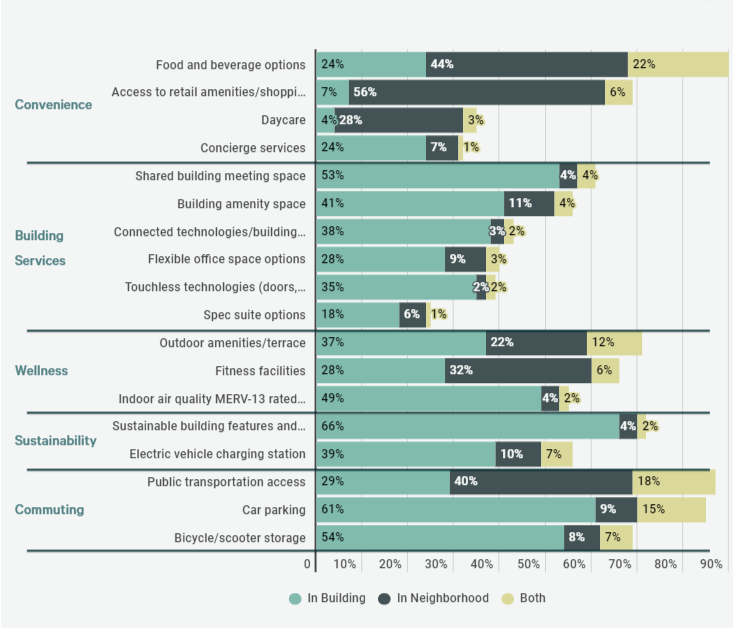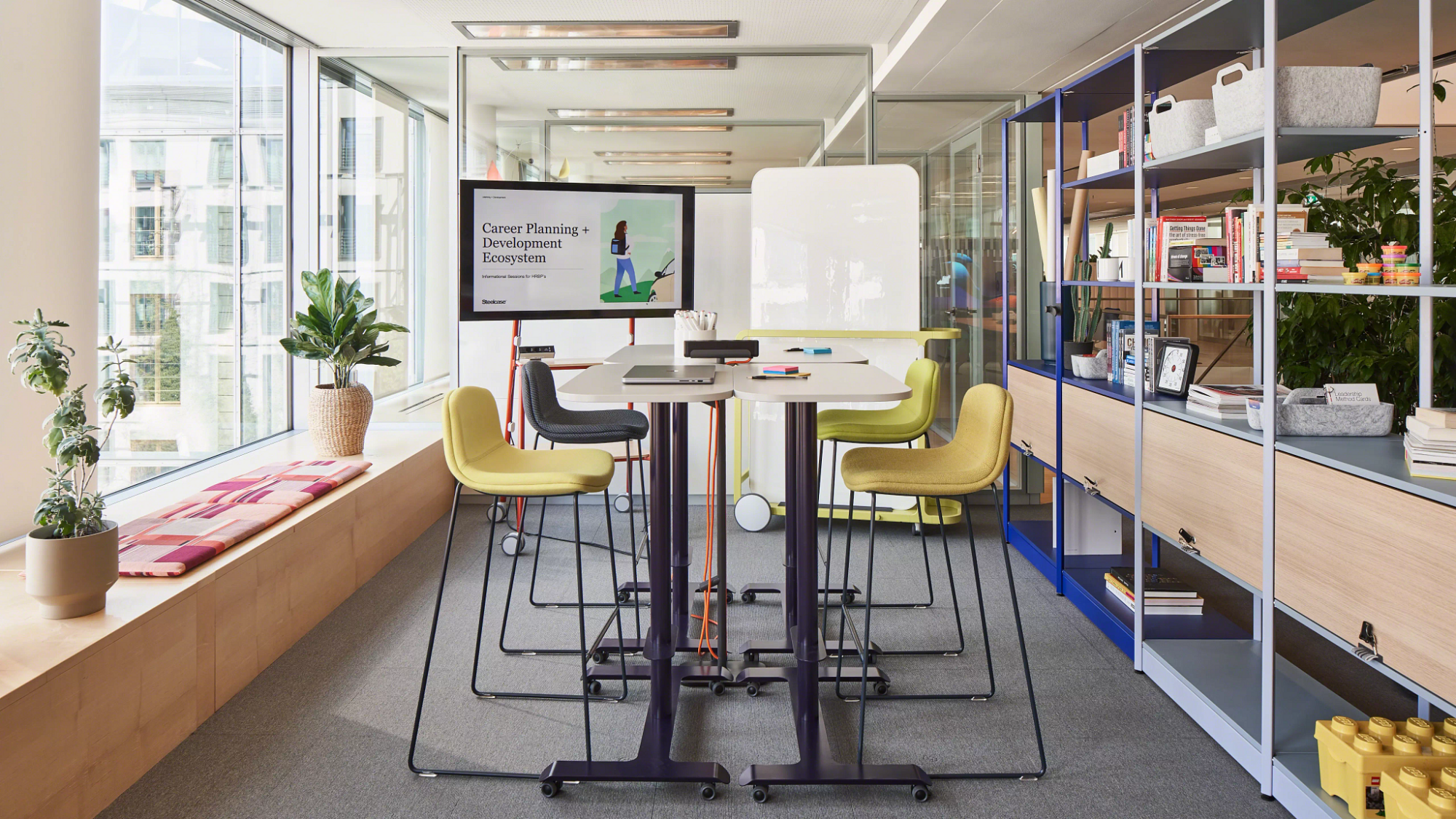We recently read a fantastic breakdown of hybrid work stats and what companies are planning in CBRE’s 2024 Americas Office Occupier Sentiment Survey. You can read the results in their entirety or stick with us to learn a few takeaways we found most helpful for decision-makers. 2024 Americas Office Occupier Sentiment Survey | CBRE (All graphs in this article come from the CBRE Survey Report.)
In our synopsis of this report, we will cover how companies are responding to the following categories:
- Office Attendance Policies and Mandates
- Employer Expectations for Office Attendance vs. Actual Show-Up
- Measurements of Workplace Effectiveness
- Corporate Real Estate Technology Priorities
- Most Desirable Amenities for Occupiers
Office Attendance Policies and Mandates

According to CBRE’s data, 80% of companies have a return-to-work policy in place. That means the majority of companies in the US prioritize having their employees in the office so much that 51% have mandated it. However, there is a discrepancy between the mandates, and how strictly companies enforce them. The first step to mandating a policy should be measuring whether or not it is being followed and only 45% of companies are reporting to be doing that. Additionally, only 17% of those policies are enforced.
Employer Expectations for Office Attendance vs. Actual Show-Up

As seen in this table, employers expect a higher in-office attendance rate than employees actually show up. While it is not a huge discrepancy, there is an expectation gap nonetheless.
This communicates that companies want their employees in the office, but they are not willing to take harsh measures to ensure employees come in. In many cases, employers are in a stalemate position with their employees and at risk of losing talent if they enforce these mandates. The question remains, should companies adjust their policies to be consistent with what they are willing to enforce? Or, should they keep the policies in hopes the economy may influence employees to comply?
Measurements of Workplace Effectiveness
It all comes down to workplace effectiveness and how you measure that. When decision-makers are trying to make the best long-term decisions regarding their space, space utilization is understandably the key indicator. How many days employees are in the office directly corresponds to how well you use and manage the space. That is why 74% of companies measure how fully the spaces they provide are used. Harder to measure is employee engagement. Yet, 65% of businesses find these important hybrid work stats to track. Another easier statistic to measure is employee retention and/or attrition. If you are losing employees then your space is not effective for work. That is why 35% of companies prioritize this measurement. Unexpectedly, only 28% of companies measure workforce productivity to determine a space’s productivity. This can also be hard to ascertain because so much of the in-office work is naturally collaborative.
No matter how you look at it, time in-office is always going to be important and decision-makers should work to create spaces that employees both want and need to be successful.

Corporate Real Estate Technology Priorities
Some of the most important tools that support well-functioning hybrid environments are technology tools. It is a well-known fact that to support a hybrid workplace, technology must play a major role. That is why 82% of companies are prioritizing the addition of enhanced video conferencing tools followed by room booking software and building and occupancy sensors. It stands to reason that the more you know about how your space is used, and create spaces your employees need when they are in the office, the more effective your workplace will be.

Most Desirable Amenities for Occupiers
In addition to technology that supports employees, there is also a laundry list of other amenities that employees want and employers could use to lure them back into the office. The top draws are easy and reliable transportation (preferably with parking available), food and shopping access, and access to environments that prioritize wellness. While some of these amenities depend on location, businesses can offer some of these things in their building. For example, they could provide a fitness facility, create a cafeteria, or improve their parking situation by buying a lot or subsidizing parking for employees.

In conclusion, employers want to maximize the effectiveness of their real estate and that often looks like filling it with employees. However, with the discrepancy between employer expectations and employee show-up rates, they have some work to do. They can start by supporting employees when they are in the office with the spaces, technologies, and amenities they need to be productive. Over time, they may just see the positive shifts toward in-office attendance they have been hoping for.
Receive our Newsletter
To receive our newsletter, including new editions of spaces and other digital content, fill out the form:



